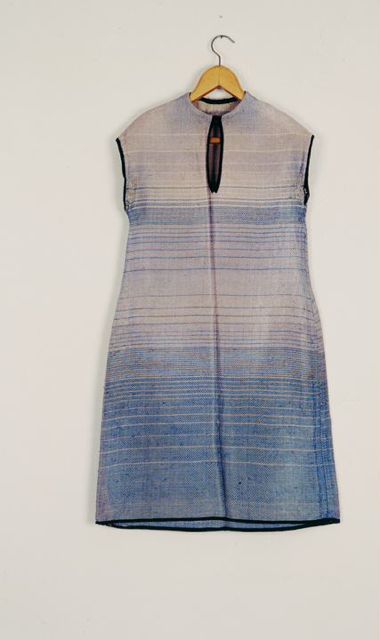Bauhaus Dress
Lis Beyer-Volger, 1928

[Translate to English:] text
Fashion designer Wolfgang Joop regards Lis Beyer-Volger’s Bauhaus dress, which she designed in 1928 and made in the weaving workshop at the Bauhaus in Dessau, as a ‘reduced necessity’ that made possible a radical rejection of the image of woman as a mere decoration for man. The plainness and simplicity of this nevertheless elegant-appearing dress are seen in its straight, tapering cut and the choice of material (cotton and artificial silk). The delicate, pale blue shades emphasize the coarseness of the firm material. With its overall length of 101 cm, ending just above the knee, Lis Beyer’s Bauhaus dress would probably have counted as a minidress at the time when it was made.
With its overall appearance (waist, shortness, low neckline), the dress must have shocked conservative middle-class residents of Dessau, while nevertheless appearing to the members of the Bauhaus as a logical implementation of their modern ways of thinking. Lis Beyer-Volger reduced the design for a Bauhaus dress to a purist, functional minimum and made it into a kind of uniform for the modern Bauhaus woman.As early as 1926, Coco Chanel had invented the ‘little black dress’ – a short, tight sheath dress – to meet women’s changed requirements after the First World War. Beyer-Volger’s dress was following in her contemporary’s footsteps.
[AG 2015]
- Literature:
- Wolfgang Joop, "Die reduzierte Notwendigkeit. Lis Volgers Bauhaus-Kleid" (2009), in: Bauhaus-Archiv / Museum für Gestaltung, Stiftung Bauhaus Dessau und Klassik Stiftung Weimar (Hg.), modell bauhaus, Ostfildern, S. 252.